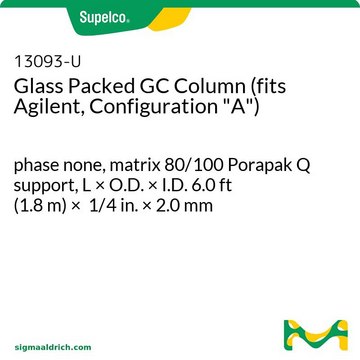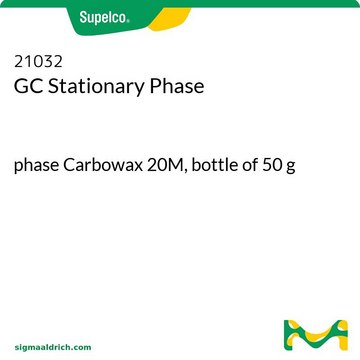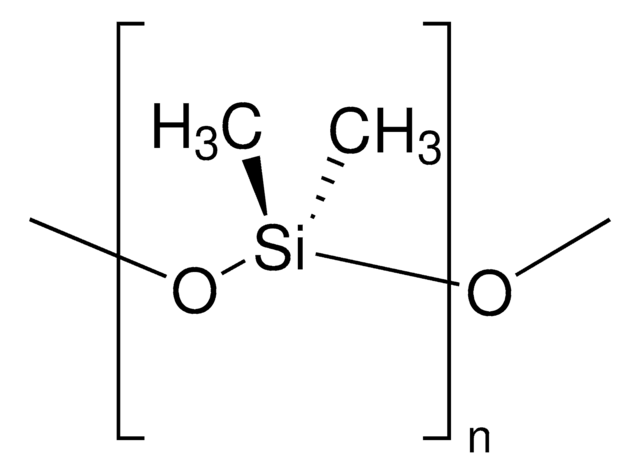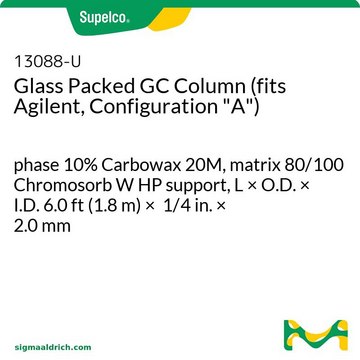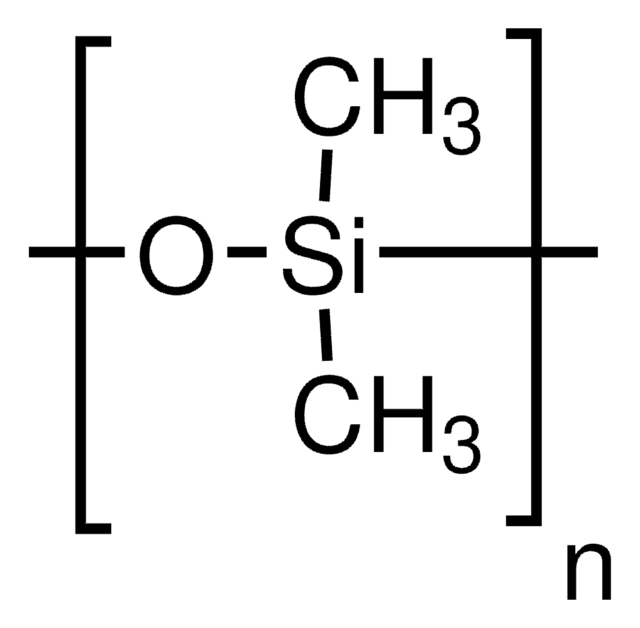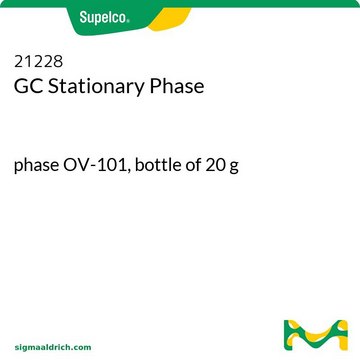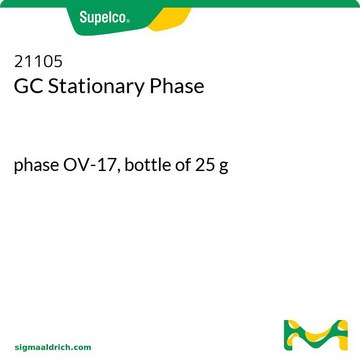21240-U
GC Stationary Phase
phase OV-210, bottle of 25 g
Sign Into View Organizational & Contract Pricing
All Photos(1)
About This Item
UNSPSC Code:
23151817
NACRES:
SB.54
Recommended Products
Agency
meets requirements for USP G6
packaging
bottle of 25 g
parameter
0-275 °C temp. range
technique(s)
gas chromatography (GC): suitable
matrix active group
OV-210 phase
solubility
acetone: soluble
column type
packed GC
General description
GC methods are divided into two classes depending on the nature of stationary phases; gas-solid chromatography (GSC) and gas-liquid chromatography (GLC). GSC has solid adsorptive material and solute particles are removed from mobile phase by electrostatic forces. GLC has a thin layer of liquid coated or bonded on the surface of an inert particle or on the walls of the column where solute particles are retained in the liquid phase based on their partition coefficients. The primary necessity of a stationary phase is to provide sample separation sustaining phase integrity over a reasonable period of time. It should be stable for the chemical and thermal changes. Selectivity, peak symmetry, analysis time, degree of separation, peak tailing are a few parameters that should be considered in order to choose a stationary phase. OV-210 stationary phases possess 50% trifluoropropyl groups which generate important electron acceptor effect and produce an outstanding selectivity.
Synthesized specifically to be purer, of narrow molecular weight range, and without trace catalysts or impurities for use as a GC stationary phase.
Signal Word
Warning
Hazard Statements
Precautionary Statements
Hazard Classifications
Eye Irrit. 2 - Skin Irrit. 2 - STOT SE 3
Target Organs
Respiratory system
Storage Class Code
10 - Combustible liquids
WGK
WGK 3
Flash Point(F)
Not applicable
Flash Point(C)
Not applicable
Personal Protective Equipment
dust mask type N95 (US), Eyeshields, Gloves
Regulatory Information
新产品
Choose from one of the most recent versions:
Certificates of Analysis (COA)
Lot/Batch Number
Sorry, we don't have COAs for this product available online at this time.
If you need assistance, please contact Customer Support.
Already Own This Product?
Find documentation for the products that you have recently purchased in the Document Library.
Michael O'Keefe
Residue Analysis in Food: Principles and Applications, 187-187 (2000)
James P. Lodge, Jr.
Methods of Air Sampling and Analysis, 98-98 (1988)
David B. Troy, Paul Beringer
Remington: The Science and Practice of Pharmacy, 605-605 (2006)
Our team of scientists has experience in all areas of research including Life Science, Material Science, Chemical Synthesis, Chromatography, Analytical and many others.
Contact Technical Service